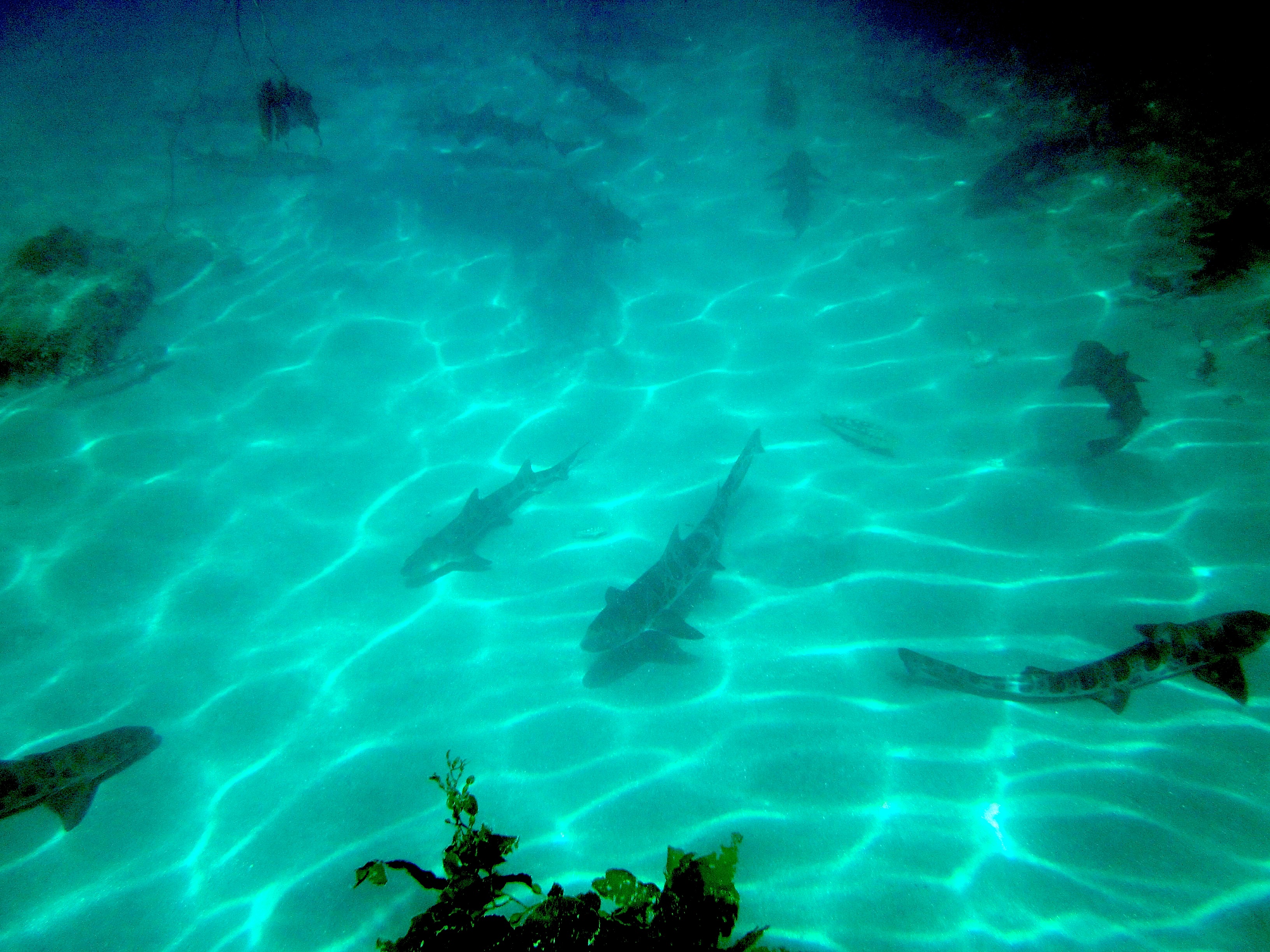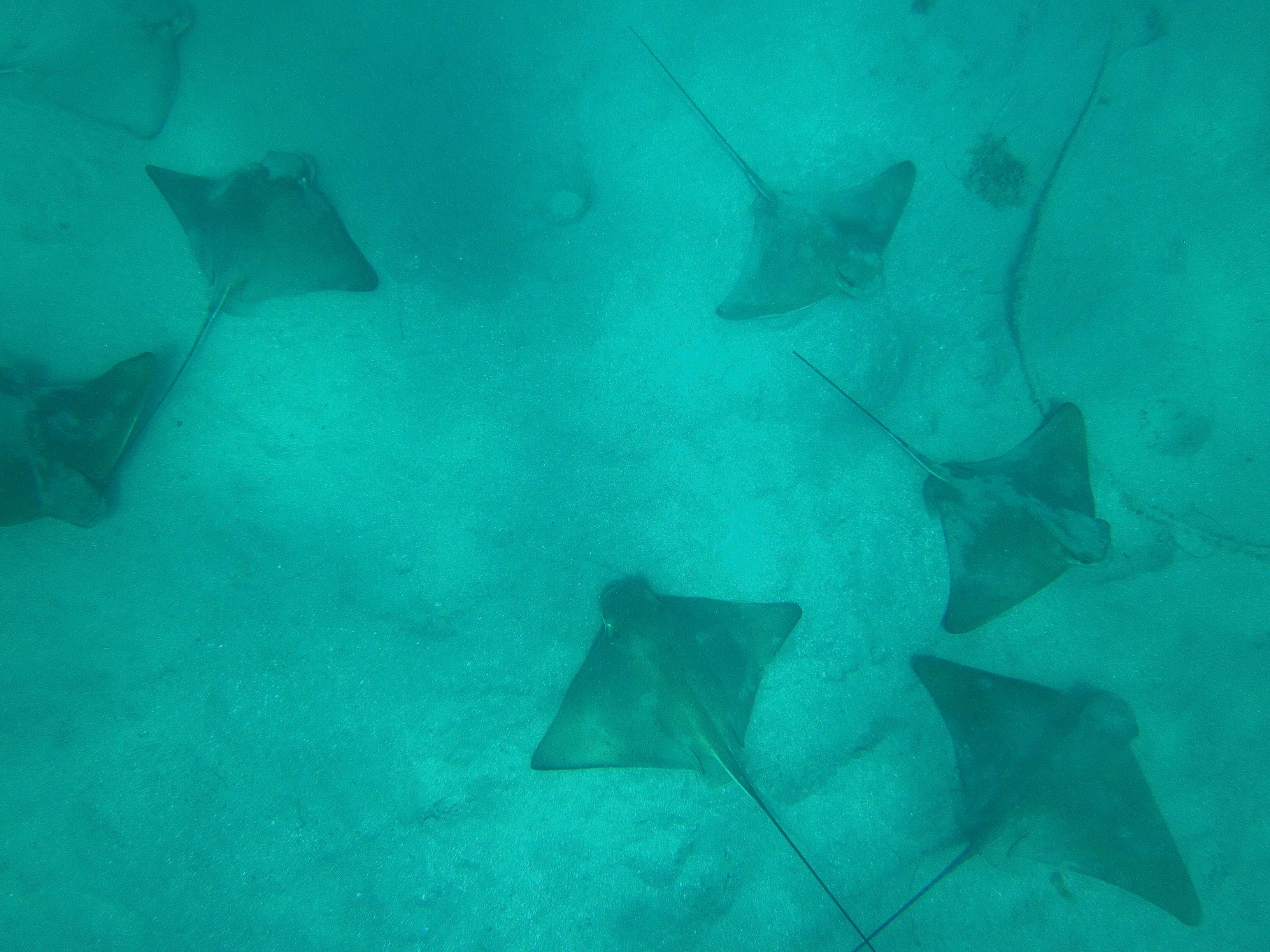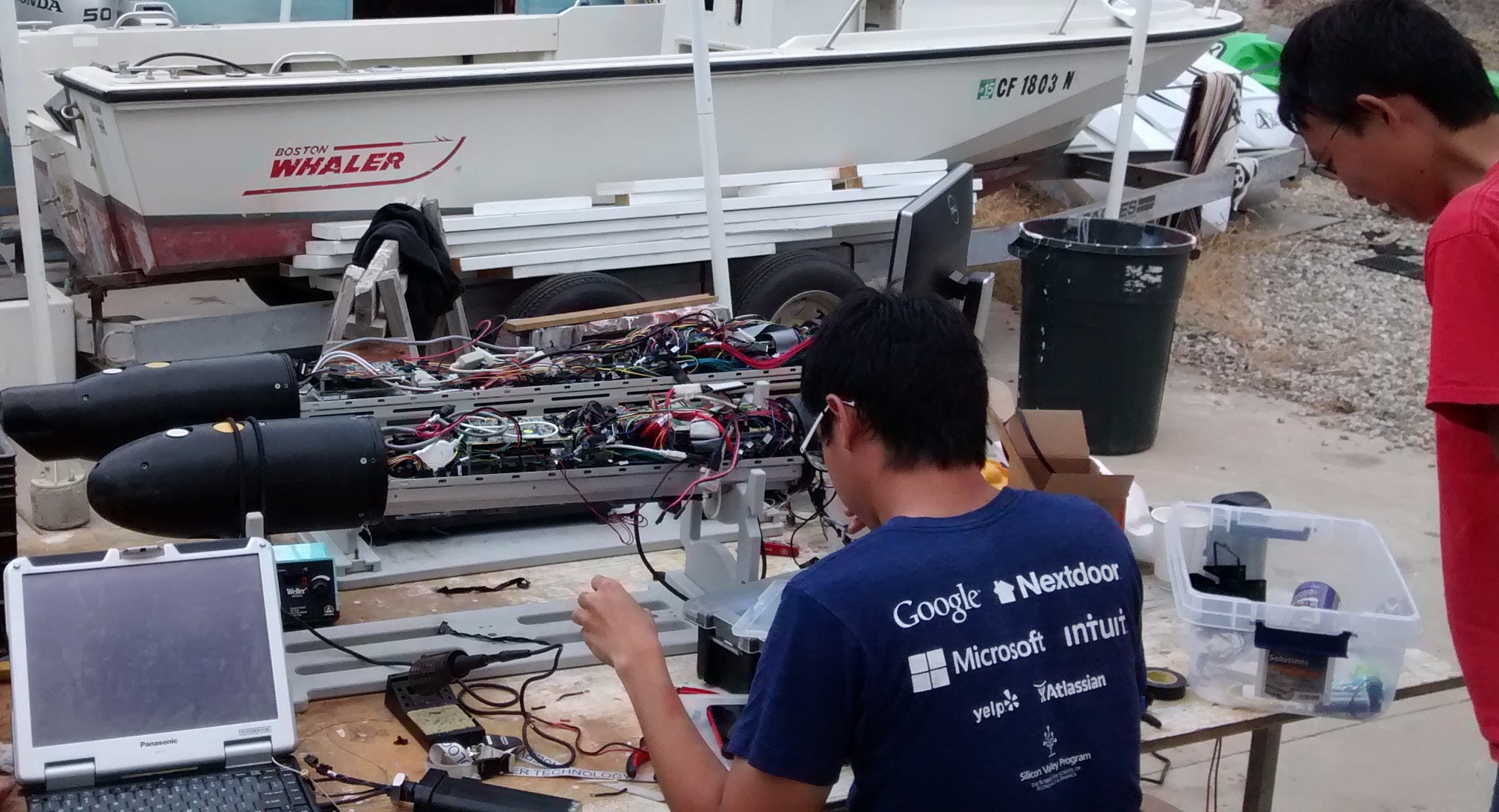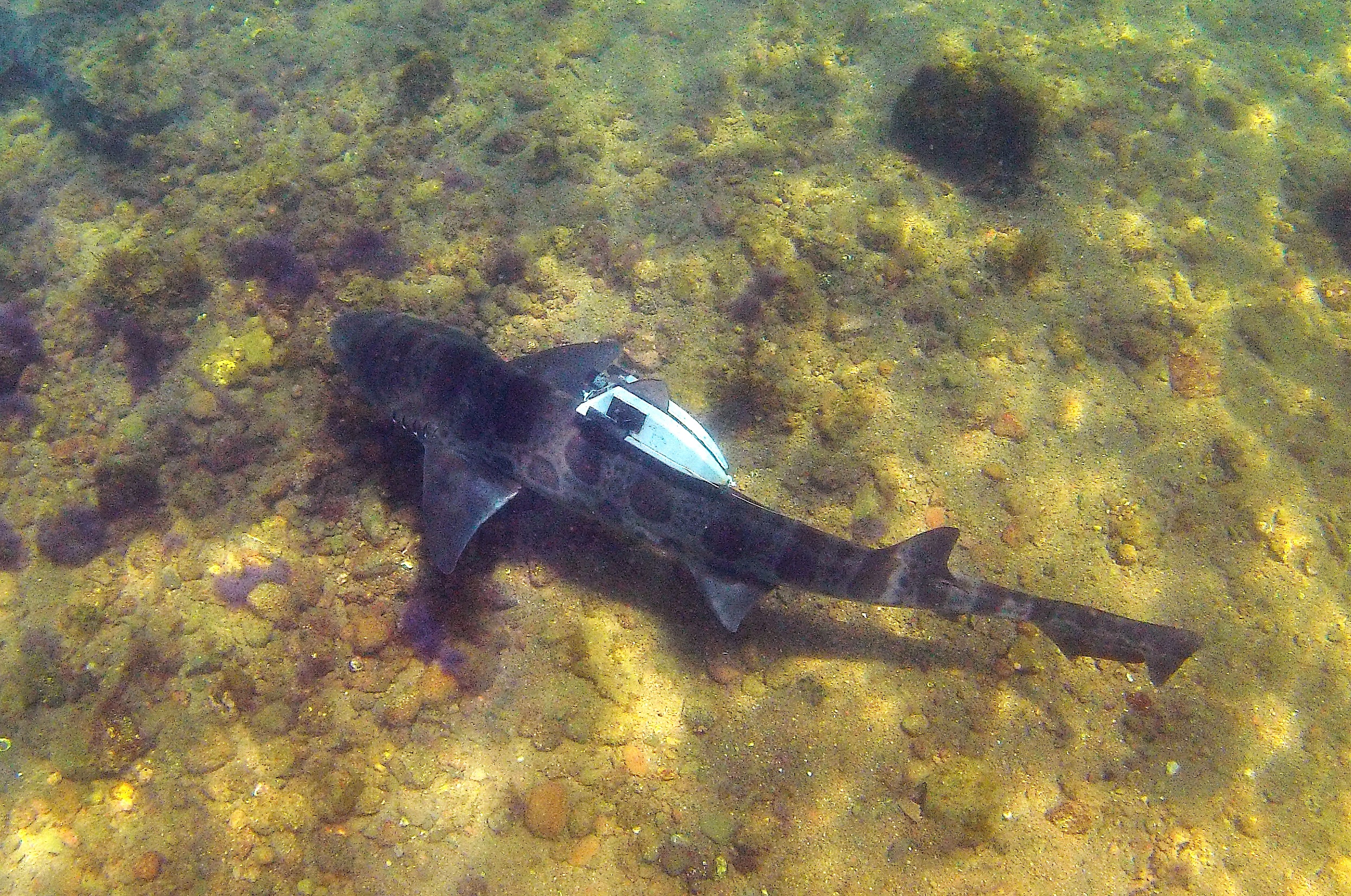By: Connor White
I am a graduate student in the Shark lab at California State University Long Beach, and this year I have spent my summer as a Wrigley Institute Summer Fellow. My research has had two goals 1) Determine how sharks behave and how they make decisions and 2) Develop the tools that allow me to answer this question.
Big Fisherman’s cove is home to a wide variety of elasmobranchs, which is the class that is composed of sharks, skates and rays. In just a 30 minute snorkel of the cove, you can routinely see bat rays, round rays, shovel nose guitar fish, horn sharks and leopard sharks. What makes the cove so appealing to these animals? Even within Big Fisherman’s cove, different kind of animals inhabit different areas. Where you find the bat rays is not where you find leopard sharks, and horn sharks are in a different location still. Furthermore, depending on the time of day and season, animals are in different locations than they were before.
I am trying to figure out how animals are interacting with their surrounding world, and how they are choosing where to go and what do to do. My project uses the leopard sharks in the cove as a model system to determine how the environment shapes their decisions.
However, studying animals underwater is hard – humans are not designed for the water and thus we have to rely on technology to do the work for us. With colleagues from Harvey Mudd College we are developing an autonomous underwater vehicle (AUV) that is capable of tracking sharks. Basically, with this equipment, I can attach a small acoustic tag to a shark and then the AUV robot records where the shark is. Additionally, when the shark moves, the robot will follow it.
However, knowing where an animal is does not tell us what the animal is doing there. I am using two different technologies to figure out what sharks are doing. I place a small video logger on the shark, and for 12 hours I can see exactly what the shark sees, and can see how it is interacting with the world around it. I also place an accelerometer data logger package on the shark. This tag basically acts like a “Wii remote” – it can determine the position of the animal and how much it is moving, so I can see each tail-beat. Basically, its like a shark pedometer. At the end of the day, I can put all these pieces of information together to see both where the animals are, what they are experiencing in the environment AND what they are doing.
What have I found out so far? Sharks here are selecting sandy habitats with very little wave action. However, the biggest factor determining their behavior is water temperature. Sharks are really seeking out the toasty water to increase their body temperature. I also found out that getting all of this technology to work together at the same time is hard. This summer I have not gotten everything accomplished that I hoped for, but it was a good start. I hope to be a Wrigley Summer Fellow again next summer, as it is an amazing opportunity to do research in such a unique location.
Connor is a 2014 WIES Summer Fellow, and a graduate student in Chris Lowe’s Shark Lab in the Department of Biology at California State University, Long Beach.




